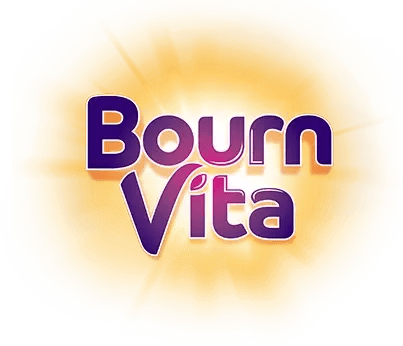- Carbohydrates – Your Child’s Main Energy Source
- Proteins – The Building Blocks of Growth
- Fats – Not Always the Enemy
- Vitamins and Minerals – The Micronutrient Heroes
- Fibre – The Digestive and Immunity Hero
Introduction

As a parent, you want to make sure your child is eating well. However, with numerous food labels, trends, and health claims available, understanding what’s nutritious can feel overwhelming. That’s where nutritional value comes in, it is not about fancy words or calorie counts, it’s about knowing what’s in your child’s food and how it supports their growth, energy and immunity.
According to CCRH, nutritional value refers to the essential components in a food item that benefit the body, like carbohydrates for energy, proteins for growth, fats for brain development, vitamins and minerals for immunity and fibre for digestion. Each meal your child eats plays a role in how they think, feel, and function. For instance, a banana is not just a fruit, it’s a quick source of energy, potassium and natural sugars that fuel play and concentration. A bowl of dal is not just a lentil soup, it’s plant protein, iron and B vitamins that support muscle repair and stamina.
When you understand nutritional value in simple terms, meal planning becomes less stressful and more meaningful. Whether you’re packing a lunchbox or preparing dinner, knowing the value behind everyday foods helps you create a balanced plate that supports your child’s physical and mental development, without second-guessing your choices.
What Is the Nutritional Value of Food?
Understanding food values means looking beyond how something tastes or fills you up, it’s about knowing what’s inside that helps your body grow, heal and energize. According to a study published in Treasure Island 2025, Every food you eat has a mix of carbohydrates, proteins, fats, vitamins, minerals, water and fibre. These work together to support everything from a child’s brain development and muscle strength to strong bones and good digestion.
For example, according to Adv Nutr. 2012, fruits have natural sugars and vitamins C and A that support the immune system and skin health. Grains like rice or chapati have carbohydrates that fuel the body for school, play and studies. Protein-rich foods like lentils, dairy, and nuts help repair tissues and build muscle. Healthy fats from seeds, ghee and oils help in brain development and absorption of fat-soluble vitamins like D and E.
Parent-Friendly Breakdown for Nutritional Value of Food

Understanding the nutritional value of food is one of the most important things you can do for your child’s long-term health. From building strong bones to helping the brain stay sharp, every nutrient plays a crucial role. With a little awareness, everyday Indian meals can be tailored to support your child’s growth, immunity, and energy levels. Here’s a simple breakdown to help you make wise food choices with confidence.
Carbohydrates – Your Child’s Main Energy Source
According to a study published in Treasure Island 2025, carbohydrates fuel your child’s body and brain. But instead of sugary snacks, focus on complex carbs like whole wheat roti, brown rice, millets (like jowar or bajra) and poha. These release energy slowly, keeping your child full and active for longer. Add a spoonful of ghee for satiety and digestion, especially for active kids.
Proteins – The Building Blocks of Growth
As per a study published in, Nutrients. 2021, it is important that kids get enough protein daily. Good vegetarian sources are dal, chana, rajma, sprouts, and paneer. If your child is lactose intolerant, you can replace paneer with tofu or add cooked soy chunks to pulao. Eggs (if consumed) are a powerhouse, especially when paired with chapati or rice. Combine protein with whole grains to increase absorption.
Fats – Not Always the Enemy
Research published in Matern Child Nutr. 2011, suggested that children need fats for growth, but it is important to understand the right kind of fat for kids' growth. Use cold pressed oils (like mustard or groundnut), nuts like almonds and walnuts, and seeds like flax or sunflower. For lactose-intolerant kids, almond butter or coconut-based spreads can be a great alternative to ghee or dairy butter. Just keep portions moderate and include fat with meals, not in isolation.
Vitamins and Minerals – The Micronutrient Heroes
According to Indian Academy of Pediatrics (IAP), iron, calcium, zinc, and vitamins A, C, and D all have their own roles when it comes to kids growth and development. Offer spinach, beetroot, carrots, amla, citrus fruits and seasonal vegetables. For calcium, add ragi, sesame seeds or tofu if milk isn’t suitable. Encourage sun exposure in the mornings to naturally increase Vitamin D levels and include vitamin C-rich fruits to enhance iron absorption.
Fibre – The Digestive and Immunity Hero
As per the Dietary Guidelines for Indians, whole grains, fruits with skin (like apples or guavas) and vegetables like peas and sweet potatoes are good fibre sources. Moong dal chilla with grated vegetables or multigrain upma are fibre-rich options that are also tasty. Kids who don’t get enough fibre may have bloating or low energy – add it gradually and consistently.
Conclusion

Focusing on the nutritional value of food helps you make better choices for your child’s daily meals. By balancing carbs, proteins, healthy fats, vitamins, and fibre, you support their growth and energy needs. Simple Indian foods, when planned well, can meet most of these needs without any fuss.
Her love for storytelling began with reading her grandfather’s speeches, where Tarishi saw the power of words in creating lasting memories. Combining her passions for food and writing, she has turned her life into a fulfilling path of sharing stories that celebrate flavours and how food brings communities together.
The views expressed are that of the expert alone.
The information provided in this content is for informational purposes only and should not be considered a substitute for professional medical advice, diagnosis, or treatment. Always seek the advice of your physician or another qualified healthcare provider before making any significant changes to your diet, exercise, or medication routines.
References
https://www.nin.res.in/dietaryguidelines/pdfjs/locale/DGI24thJune2024fin.pdf
https://iapindia.org/registration/doc/mzV3AsqgCOkZP_W_577_703_merged.pdf
https://pmc.ncbi.nlm.nih.gov/articles/PMC6860654/
















